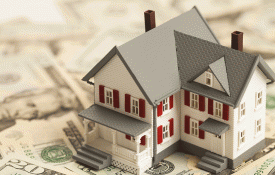As we enter the market of post crisis, real estate values have recovered significantly and have trended upwards across the metropolitan areas. Prices are at or above what they were at the lows of the market fueled by REOs and nervous banks and investor fire sales. Interest rates have been as good as ever, have kept steady during this recovery, and look like they will carry this trend for a while at least.
As the market has recovered, cash rich investors have been gobbling up investment properties and single families for investment purposes at an excessive speed, which has left the market with little or no inventory. This lack of inventory and foresight by some real estate investors has opened the market to finding alternative methods and creating niche investing methods to curb investor hunger.
One of the niches is buying inventory that has a pedigree, architecturally or characteristically. We can see this in many aspects, including new inventory being built around town.
[To read more of James Engel’s thought leadership click here]
Architect-Driven Real Estate
We have all heard of their names but lately these names are turning into brands: Schindler, Richard Neutra, John Lautner, Gregory Ain, Harwell Harris, Irving Gill, and William Kesling are a few names that pop up regularly nowadays on the Los Angeles architectural real estate market. As much as there are residential buyers that appreciate the creations of these masters and want to live in one and revive the property to its original condition, there is another group that is investing and hunting these pieces of art as if they were lost collections of Monet.
Today we are seeing suspecting buyers recognizing styles and having their agents do research not only with city but also in historical archives, trying to identify the origins of architecturally pleasing real estate. Investors are also looking at commercial offices, inns, motels, anything that might have an architectural, historic or artistic significance. And they are gobbling up their findings and spending tremendous amounts of money, time, and resources to restore them back to their origins. Who would have thought that restoration would be the new frontier leading investors into a niche market in real estate?
This trend applies to new construction as well, we are seeing more and more inventory in Single Family Homes, Estates, and even condos that are getting a brand attached to them through the new generation of architects that is doing incredible things with style, new materials, and open living spaces. Between the restoration of the old and the new there are some interesting apartments that come about in this new investment venue, to find the architecture that suits your taste, the one that will appreciate in value and one that gives you pride of ownership. Some of the more significant properties and their architects on the apartment side are
- Le Trianon, Leland Bryant
- Sheats Apartments, John Lautner
- Bubeshko Apartments, Rudolph Schindler
- El Royale, William Douglas Lee
- Casa Laguna, Arthur and Nina Zwebell
- Strathmore Apartments, Richard Neutra
There are many more to count, and all are significant for their own reasons, but most of all in today’s big-box-building world, they have something about them—a poise, a character, a calling, a significance that only a collector and aficionado would appreciate enough to pay the price it demands and then spend the money to keep it as it is.
[For more on JV Property’s approach to Real Estate click here]
On the flipside, there is a handful of talent that is also building condos, lofts, and live-work spaces, adding new inventory that will pique the up-and-coming collector’s interest in the next 20 to 30 years.
What is most fascinating about all of this, is that any method of investment you choose to make in historical or collectible art of real estate seems to pay off in the long run; just like good art, good real estate now can find its space among diversified portfolios and pictures of the properties can be hung along the arts on the wall and be admired for what they are and what the investor had to do and will keep on doing to maintain them.
This new niche is a feasible, viable, and moderately expensive venture to take on, but preserving these works of art—that are becoming more and more significant with time—must be giving the portfolio holders and investors another level of satisfaction as they are preserving living art, and watch it pass onto the next generations to be admired and hopefully capitalized if and when needed.
It just shows one that real estate can fit any taste of a connoisseur, and has a selection so vast that one or more of them will appeal to the taste of you and yours. Make money while investing, but also take pride as you are preserving an art form into the next generations as you buy, maintain, and bring back these beautiful masterpieces back to their original glamour.














































